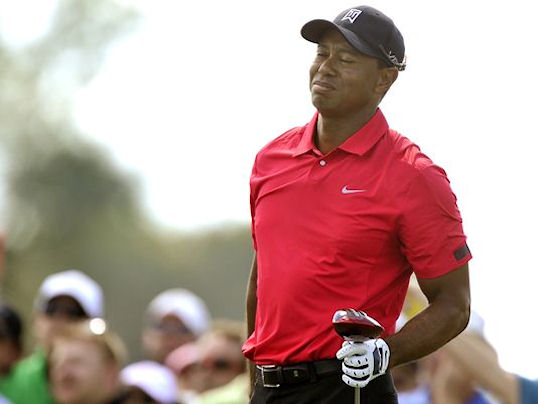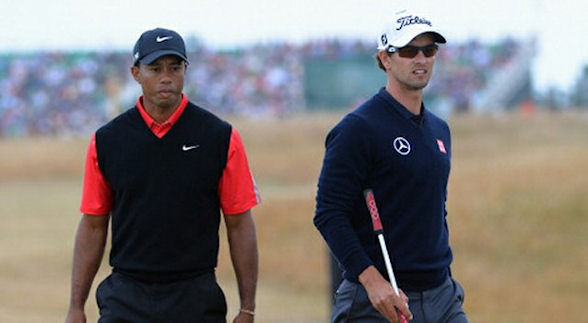For those of you who missed it, a rare event took place in the golfing world early on Monday morning. Tiger Woods – the man who has held top spot for the past 60 weeks and prior to that for a record 281 weeks straight – lost the world number one ranking.

An ongoing back injury that has kept him out of action for the past few months ultimately contributed to Woods falling one place, with 2013 Masters champion Adam Scott taking over at number one for the first time.
Scott becomes just the second Australian after Greg Norman to hold the number one ranking and only the 17th player of all time since the current ranking system was introduced back in 1986 – but he shouldn’t get too comfortable. The current race is as tight as it has ever been with five players now within a single rankings point of one another.
Scott’s 7.99 points sees him ahead of Woods on 7.85, Henrik Stenson on 7.72, Matt Kuchar on 7.12 and Bubba Watson on 7.04, but to put that into some perspective, at the height of his powers in 2007 Woods had 24.36 points – a whopping 14.73 points clear of second-placed Phil Mickelson on 9.63!

Injury has hampered Tiger Woods
What this means is that all five of those players are within striking distance of top spot and any one of them could overtake Scott in the coming months. In fact, all of them had the opportunity to beat Scott to the number one ranking only a fortnight ago had any achieved the required result at the Players’ Championship at TPC Sawgrass. All failed, but because of Woods’ absence Scott managed to overtake him this week anyway – despite having the week off!
So how does a situation such as this come to be? It’s all thanks to the rankings system, which aims to reward players for consistency over a set period in order to determine who sits where amongst the golfing elite. The system has been refined many times in the past 28 years, but right now it spans an ongoing two-year period which sees players accrue rankings points from each tournament they’ve played over the past two years, depending on where they finish, and having their total points divided by the number of events they’ve played.
The number of points available in any given event is determined by its prestige and the quality of the field taking part. Thus, the four majors have an event ranking of 100 which means the winner receives 100 points. The Players’ Championship – the unofficial fifth major – has an event ranking of 80 so the winner receives 80 points. The remainder of the field is awarded points on a sliding scale, with second receiving 60% of the winner’s points, third 40% and so forth down to a point where a player would receive 1.2 points. Anything below this means the player receives no points.
Although the system counts backwards two years from the current point in time, it also rewards recent form over distant form, so players only retain full points from each tournament for a total of 13 weeks. Once 13 weeks has passed, they lose them by a factor of 1/92 or just over 1% per week until the two years has passed and the points disappear completely.

Complicated? Just a little and extremely difficult to keep up with for the casual observer, but what we can be certain of is that with the current points average between the top five so close, results over the coming weeks and months are going to be crucial in determining whether Scott can hold onto his crown for a while or if one of his rivals will quickly catch up.
He is scheduled to take part in this week’s Crowne Plaza Invitational in Fort Worth, Texas, and it will be interesting to see how he handles his new mantle.







